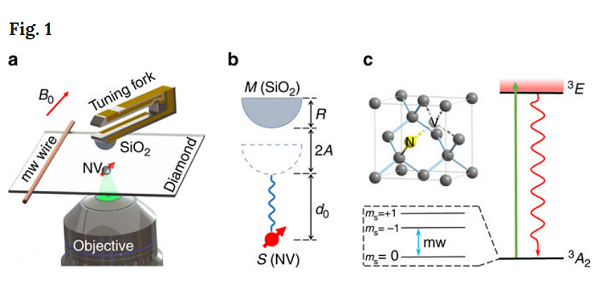For decades, scientists have been dedicated to detecting new particles that are not included in the standard model. A type of hypothetical ultralight scalars, such as axions or axion-like particles (ALPs), has attracted a lot of attention in a wide variety of researches. Yet there has been no sensor that is small enough, or accurate enough to detect such particle.

These challenges may come to an end soon, thanks to the achievement of Prof. DU Jiangfeng and his team from the University of Science and Technology of China. They just developed a method that extends our investigation range deeper into smaller scales, that is, shorter than 20μm. This new method may lead to the detection of many more new particles.
The solution proposed was to investigate the electron–nucleon monopole–dipole interactions. They used a near-surface single electron spin, which is a nitrogen-vacancy (NV) center in diamond, as the sensor. The NV center is less than 10 nm close to the surface of the diamond, so that it allows close proximity between the electron and the nucleon. The sensor can then detect the electron–nucleon interaction between the NV center and the nucleons in a fused silica half-ball lens.
As the experiment indicated, this new method may detect interactions at the force range as short as 0.1μm. So far researchers have found no clear evidence that proves the existence of new particle within its detection range, yet this method can be further improved to fit more researches concerning spin-related interactions.
Reviewers highly recommend this result as “compelling” and “could open the direct searchable window to larger masses of the interacting bosons”. According to the team, this achievement may also inspire more discoveries in a variety of fields including cosmology, quantum science and fundamental theories like the string theory.
(Written by LIU Yu,edit by YAng Xinqi, Key Laboratory of micromagnetic resonance, School of physics, Hefei micro scale Material Science National Research Center, Chinese Academy of Sciences quantum information and quantum technology innovation research institute and research department, Chinese Academy of Sciences)
https://www.nature.com/articles/s41467-018-03152-9